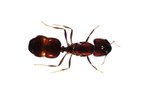
When it comes to wasps, not all insects are created equal. Wasps include some 30,000 identified species, and come in various shapes, sizes and colors. How the insects reproduce depends on their specific genetic makeup and the subgroup in which they live.
While most people may consider wasps dangerous stinging pests, the majority actually are nonstinging and do far more good than harm. For example, most wasps help control problem insect populations that destroy plants and farm land.
Types of Wasps

There are two primary subgroups of wasps: social and solitary. The group in which wasps live determine how wasps will reproduce. Social wasps live in large colonies and are led by a queen. Such wasps make their nests in holes or above ground. Yellow jackets and hornets are two well-known species of social wasps.
Solitary wasps do not form colonies and live alone. The volume of solitary wasps is much larger than social wasps. They include digger wasps, sand wasps and mason wasps, among others.
Social Wasp Reproduction
Most species of social female and male wasps mate once a year. After mating, female wasps hibernate in the ground or in an enclosed space until the winter passes. The males die. In the spring, a fertilized female wasp starts her colony by laying eggs in cell-like pods. Larvae hatche from the eggs and are fed by the female. Adult workers emerge 10 days later and care for the additional eggs. Some female worker wasps are sterile, their sole purpose being to nourish the baby wasps and assist the queen.
As the spring progresses, more eggs, larvae and workers are produced. Near the end of summer, male wasps grow from the unfertilized eggs. Fertile females develop from the well-fed larvae. The insects mate and the process begins again.
Solitary Wasp Reproduction
For wasps that live solitary lives, all females are fertile. Female solitary wasps commonly lay their eggs near a spider or other insect that the wasp has paralyzed with venom. The mother wasp does this so that as larva develops, it can use the insect for food. Some solitary females watch over their nest, while others abandon them.
Male and female solitary wasps mate in the spring. Some male species of such wasps die shortly after mating, while others survive the summer. Unlike social wasps, the majority of solitary wasps, male and female, live through winter as pupae.
The Lifespan of a Wasp
The majority of wasps live one year or less. Worker wasps generally exist for several months, while queen wasps can survive for years. Wasps do not migrate. If temperatures drop, most wasps become dormant until the weather improves.
Social wasps have the ability to live longer than solitary wasps because of their pack power when in danger. Social wasps in trouble emit a pheromone that calls to nearby colony members. The result can be a stinging attack by hundreds or thousands of wasps. As opposed to bees, wasps can sting continuously. While social wasps activate their stingers for defensive purposes, solitary wasps rely on their stingers to hunt and feed their young.
References
Resources
Photo Credits
-
John Foxx/Stockbyte/Getty Images
Writer Bio
Alicia Gallegos is a journalist in northwestern Indiana. She previously wrote for the "American Medical News, "a Chicago-based health newspaper published by the American Medical Association. She began her career at the South Bend Tribune, where she covered public safety, courts, food safety, education and health care.



